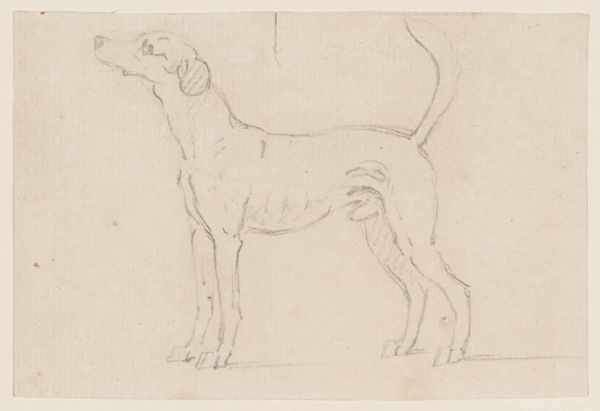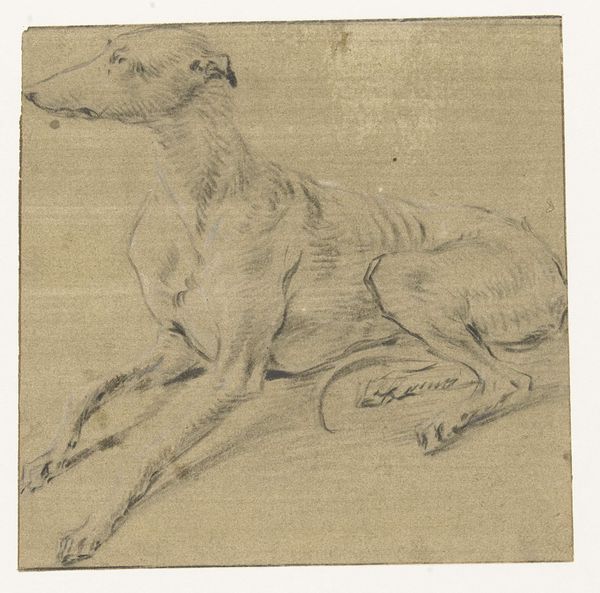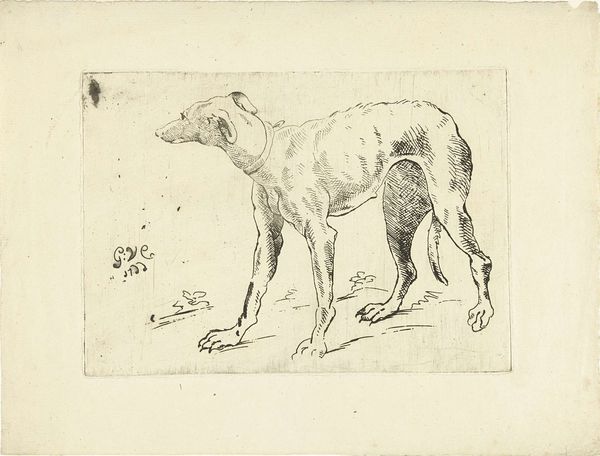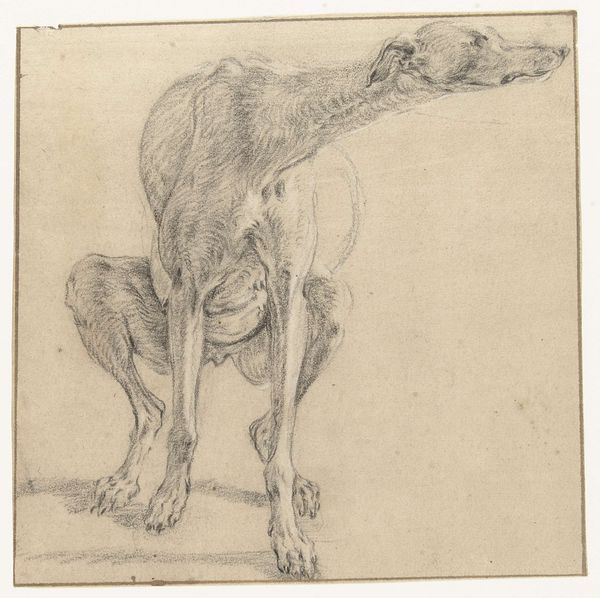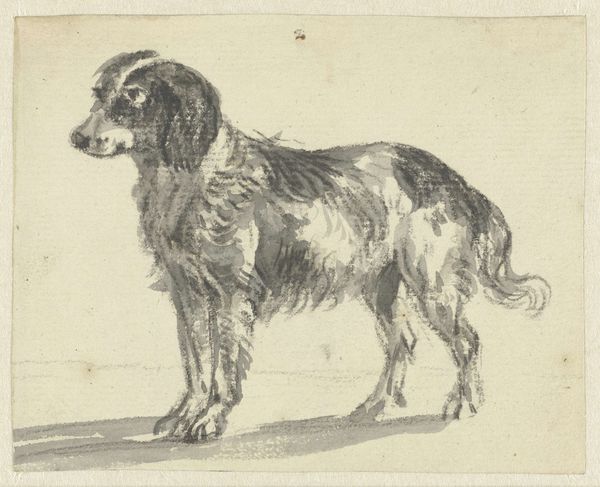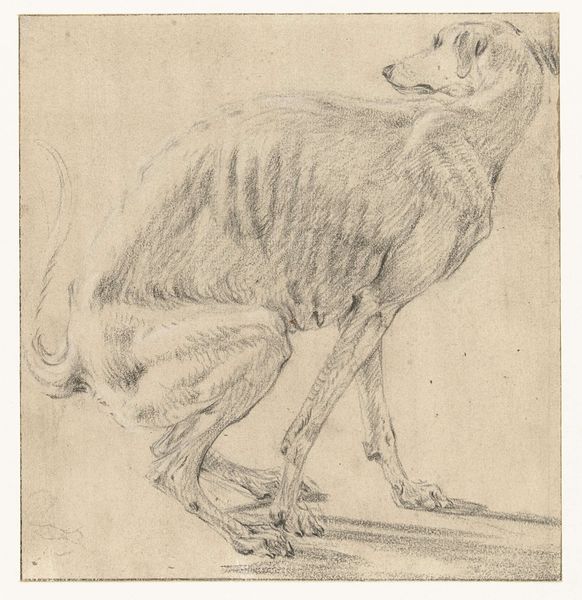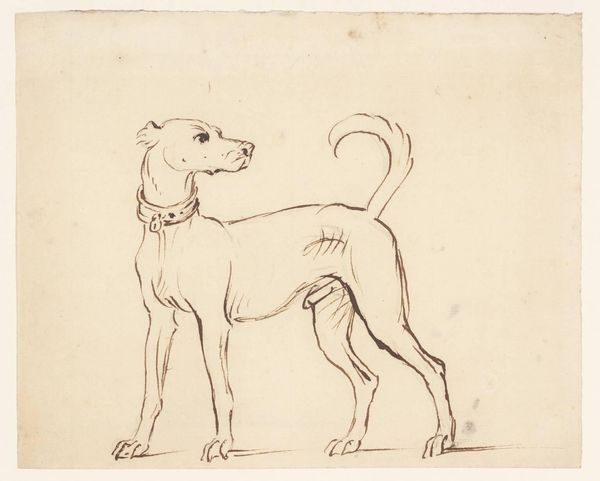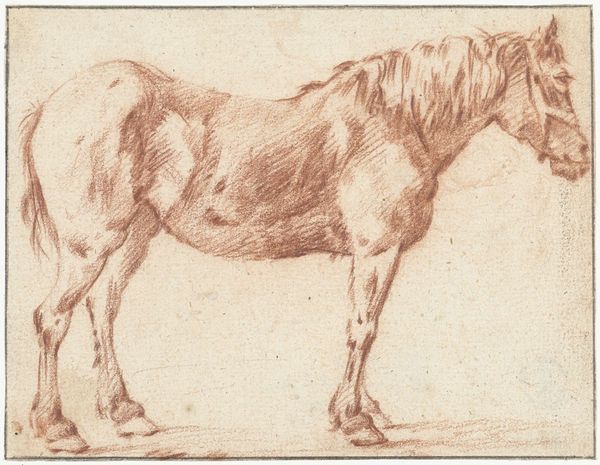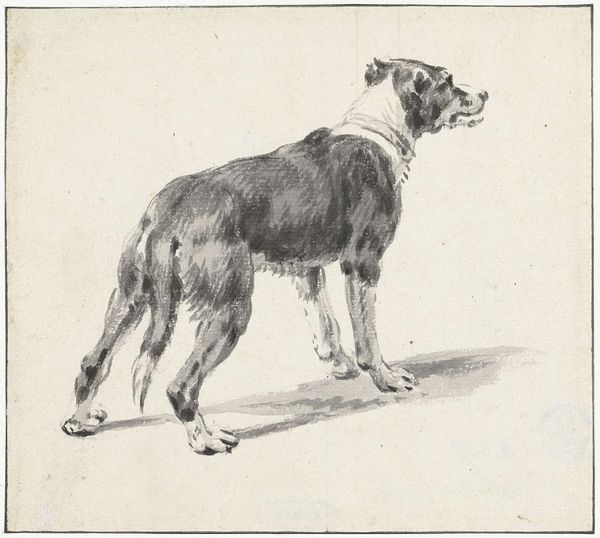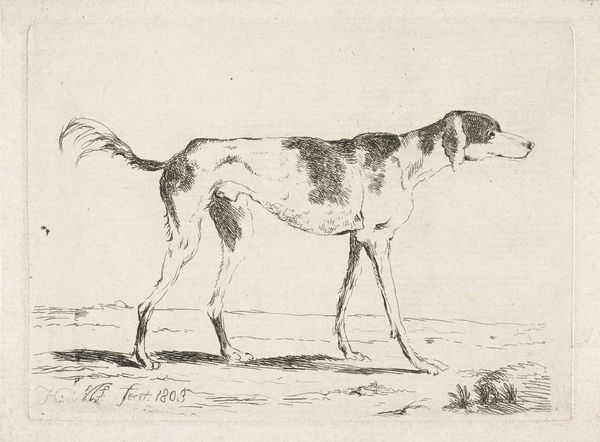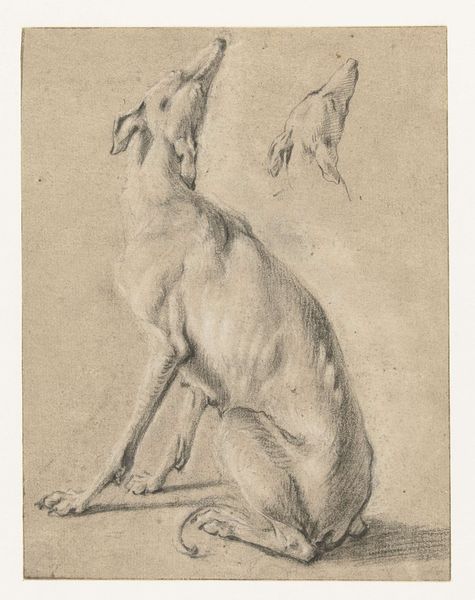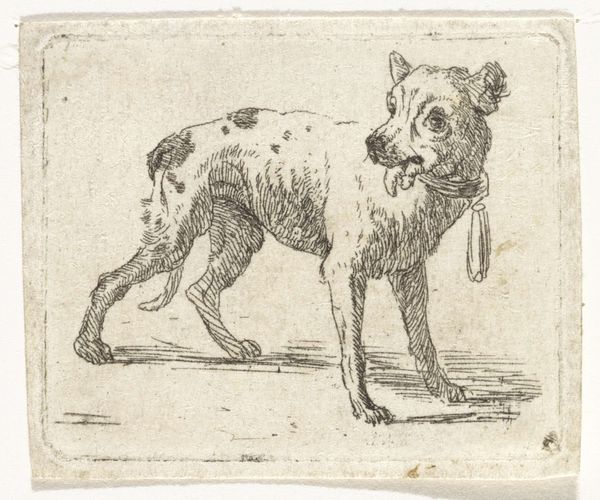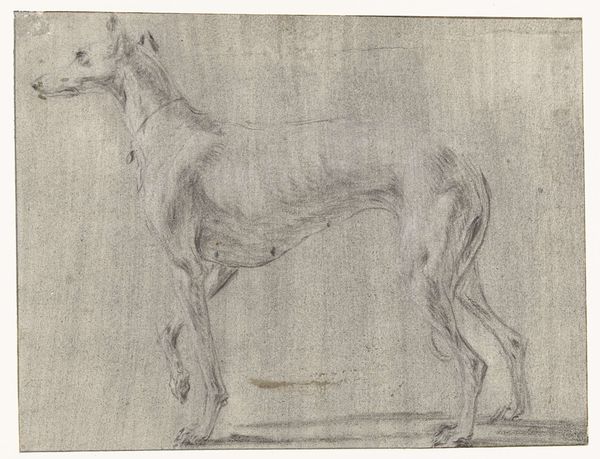
drawing, pencil, charcoal
#
drawing
#
animal
#
pencil sketch
#
dog
#
charcoal drawing
#
form
#
pencil drawing
#
pencil
#
line
#
charcoal
#
realism
Dimensions: height 192 mm, width 179 mm
Copyright: Rijks Museum: Open Domain
Curator: At the Rijksmuseum, we have before us a drawing titled "A Standing Dog, Seen from the Side," created by Frans Snijders sometime between 1589 and 1657. Editor: The first impression is one of incredible alertness, but also vulnerability. The stark pencil work captures such lean musculature, the animal seems poised yet almost fragile. Curator: Snijders was, of course, known for his animal paintings. In this pencil and charcoal drawing, though, the essence of the dog is reduced to line and form, removing much of the social context that's usually present in depictions of animals in art history. Editor: Dogs often appear as symbols of loyalty and status, especially in aristocratic portraits of that era. But here, stripped bare, what meanings could this specific breed – perhaps a greyhound – evoke beyond simple representation? We could ask if this work participates in the broader trend towards the scientific observation and categorization of the natural world that began at that time. Curator: It certainly does. The level of detail in the musculature and bone structure suggests careful study and anatomical knowledge. The lines themselves seem almost scientific in their precision. It’s also worth considering the role dogs played in hunting culture at the time, and the complex power dynamics involved in their training and ownership. They aren’t simply pets; they are instruments within social and economic hierarchies. Editor: Yes, and considering the symbolism embedded in images of canines across cultures is essential. They often exist at the boundary between domesticity and wilderness, acting as both guardians and hunters, therefore, containing that symbolic duality in them. I'm also struck by the subtle use of shading around the legs, it gives the sense of the animal tethered to the very ground in that instance. Curator: By shifting our focus away from typical portrayals to look closely at a single sketch allows us a different type of insight, a glimpse into a moment in time, and maybe, a new perspective on a familiar subject. Editor: Agreed. Seeing the drawing emphasizes the animal's inherent grace stripped from its symbolic burden really shifted my perception.
Comments
No comments
Be the first to comment and join the conversation on the ultimate creative platform.
